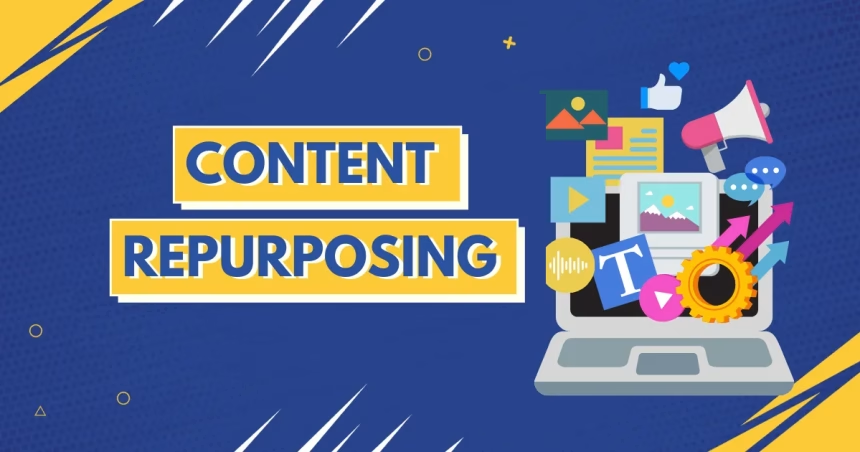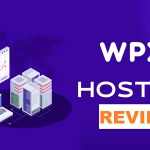Content repurposing saved me from the never-ending treadmill of content creation. Like many creators, I used to feel the constant pressure to produce fresh material while maintaining quality and engagement. It was exhausting—and unsustainable.
That’s when I discovered how content repurposing could transform my entire approach to digital marketing. Instead of starting from scratch every time, I learned how to breathe new life into existing content, saving time and maximizing its value.
Think of content repurposing like cooking a delicious meal and then transforming the leftovers into entirely new dishes—each one unique, satisfying, and perfectly tailored to your audience’s appetite. It’s not just a time-saver; it’s a smarter way to create, connect, and grow.
Let me show you how this strategy can work for you, too.
Content Repurposing Ecosystem
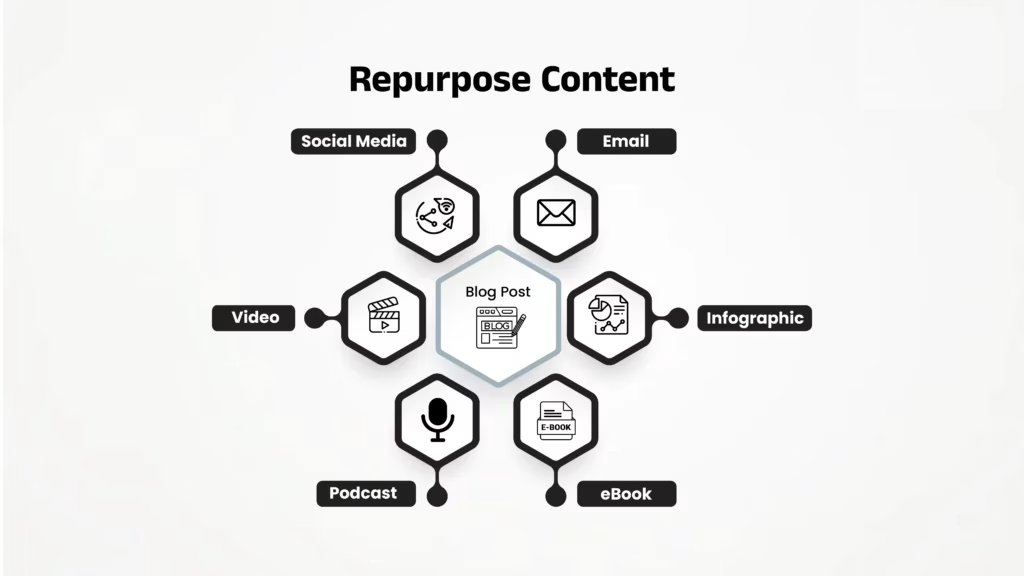
The Evolution of Content Consumption
Today’s audiences consume content across multiple platforms, each with its unique characteristics and requirements.
When I first started in digital marketing, I focused solely on blog posts. However, I quickly learned that different segments of my audience preferred different formats – some loved video content, others enjoyed podcasts during their commute, and many engaged best with visual content on social media.
The SEO Advantage
Search engines have evolved significantly in recent years. Google’s algorithms now recognize and reward content that provides comprehensive coverage of topics across different formats.
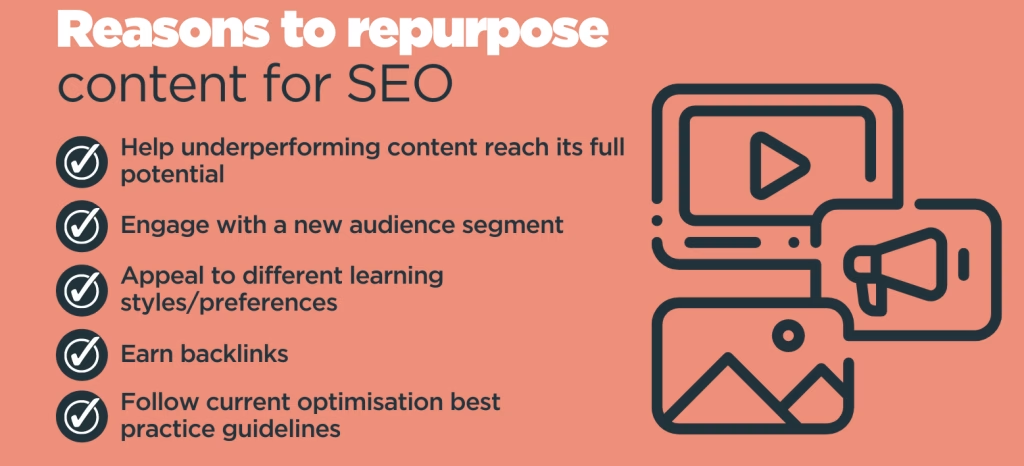
This relationship between diverse content formats and improved search visibility creates a powerful synergy that can dramatically increase your digital footprint.
What’s Behind Successful Content Repurposing
Content Atomization Strategy

Content atomization involves breaking down a comprehensive piece of content into smaller, platform-specific pieces. Here’s how I approach it:
- Core Content Creation: Start with a comprehensive piece of content – your “pillar content.” This could be a detailed blog post or an in-depth video.
- Content Mapping: Identify key points, statistics, quotes, and insights that can stand alone. These become your atomic pieces of content.
- Format Adaptation: Transform these atomic pieces into platform-appropriate formats:
- Convert statistics into infographics
- Turn key points into social media carousels
- Transform how-to sections into video tutorials
- Create audio versions for podcast episodes
Essential Tools for Modern Content Repurposing
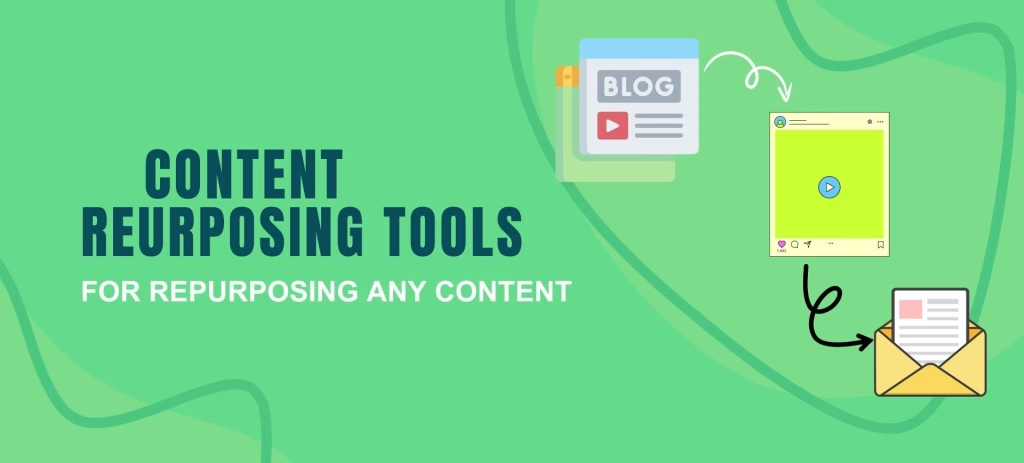
AI-Powered Tools
The technology landscape has evolved dramatically, making content repurposing more efficient than ever:
- DeepSeek/Claude/ChatGPT: For generating platform-specific variations and identifying key talking points
- Jasper.ai: Adapting content tone and style for different platforms
- Copy.ai: Creating engaging headlines and social media copy
- Canva’s Magic Write: Converting text into visually appealing graphics
Content Management and Automation
- Repurpose.io: Automating cross-platform content distribution
- Descript: Converting written content into audio/video formats
- Hootsuite/Buffer: Scheduling and managing repurposed content
- Notion: Organizing your content repository and tracking repurposing workflows
🔥 Turn One Video into 10 Pieces of Content — Instantly with Repurpose.io! Start For Free Today!
Strategic Implementation Guide
Phase 1: Content Audit and Planning
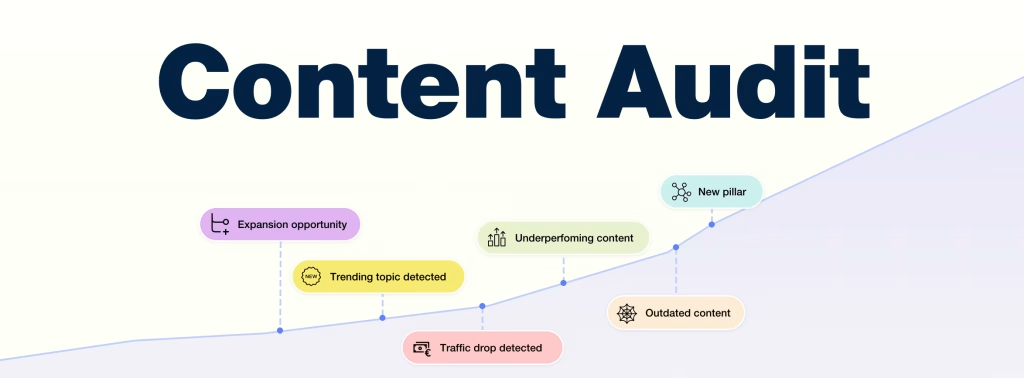
Begin by analyzing your existing content. Look for:
- High-performing pieces
- Evergreen topics
- Content gaps that could be filled through repurposing
- Seasonal opportunities
Phase 2: Platform-Specific Optimization
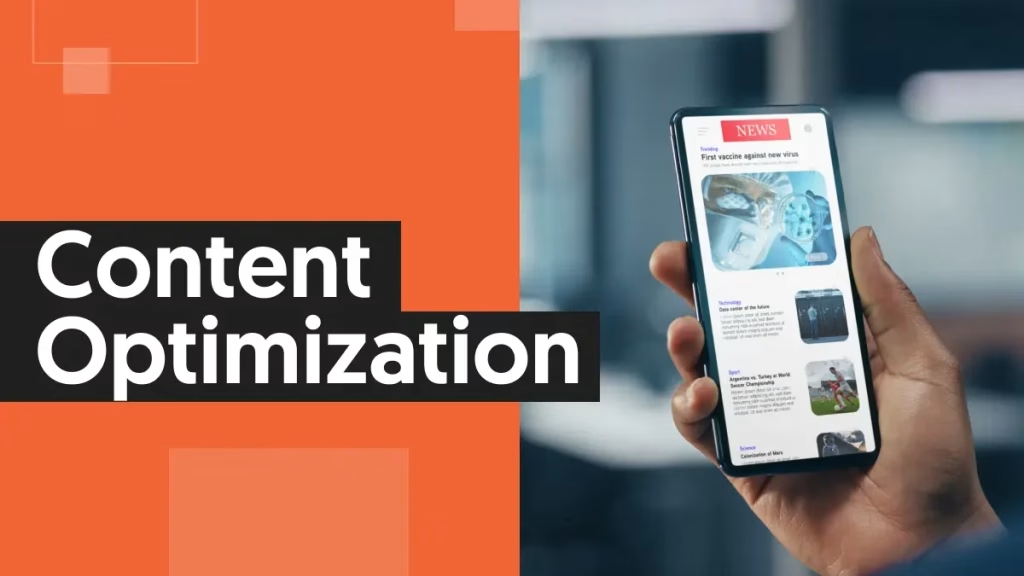
Different platforms require different approaches:
LinkedIn:
- Professional tone
- Data-driven insights
- Carousel posts and long-form articles
Instagram:
- Visual storytelling
- Carousel posts with actionable tips
- Stories and Reels for behind-the-scenes content
YouTube:
- In-depth tutorials
- Topic deep-dives
- Educational series
X (Twitter):
- Bite-sized insights
- Thread formats
- Quick tips and statistics
Measuring Success and ROI 📈
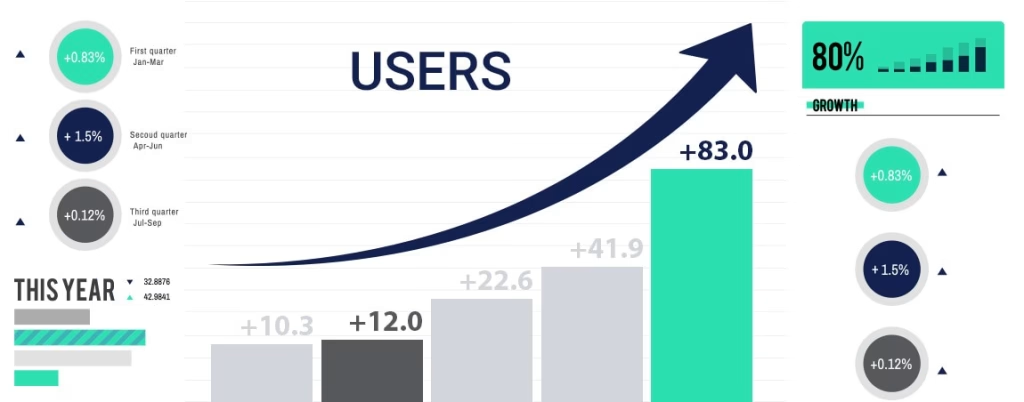
Key Performance Indicators (KPIs)
Track these metrics across platforms:
- Engagement rates
- Time spent on content
- Cross-platform traffic
- Conversion rates
- Audience growth
Analytics Tools
Utilize these tools for comprehensive tracking:
- Google Analytics 4
- Platform-specific analytics
- Heat mapping tools like HotJar
- Social listening platforms like Brand24
Advanced Content Repurposing Strategies
Cross-Language Repurposing
Consider translating successful content for international audiences. This can significantly expand your reach while leveraging existing proven content.
Seasonal Repurposing
Update and repurpose existing content for different seasons or events throughout the year. This strategy maintains relevance while maximizing content efficiency.
Common Pitfalls to Avoid
- Overlooking Platform Nuances
- Copying Without Adapting
- Ignoring Analytics
- Inconsistent Branding
- Poor Quality Control
Future of Content Repurposing
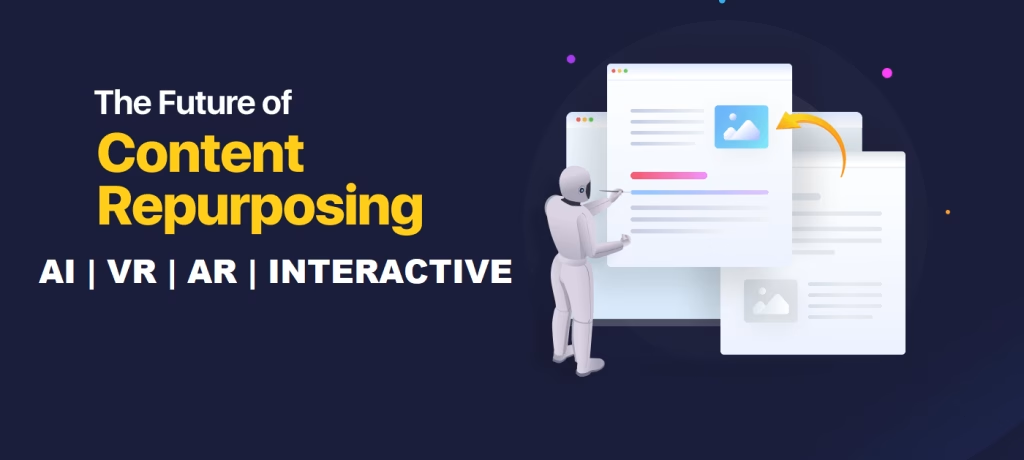
The content landscape continues to evolve with emerging technologies and platforms. Stay ahead by:
- Experimenting with AR/VR content
- Leveraging AI for personalization
- Exploring interactive content formats
- Adapting to new platform features
Conclusion
Content repurposing isn’t just about working smarter – it’s about creating a comprehensive content ecosystem that serves your audience across multiple touchpoints.
Start small, experiment with different formats, and continuously refine your approach based on data and feedback.
Remember: The goal isn’t to be everywhere, but to be valuable everywhere you are.
Next Steps
- Audit your existing content
- Choose one high-performing piece
- Create a repurposing plan
- Implement using suggested tools
- Track and analyze results
FAQ
1. How do I choose which content to repurpose first?
Start with your highest-performing content. Analyze engagement metrics, time on page, and conversion rates to identify pieces that resonate most with your audience. Prioritizing these ensures you build on content that already has a proven track record.
2. How much should I modify content for different platforms?
Adapt your content thoughtfully for each platform while keeping your core message intact. Tailor formats, tones, and visuals to match platform-specific trends and audience preferences — what works on Instagram may not work on LinkedIn.
3. Can AI completely automate content repurposing?
AI tools can streamline content repurposing by generating drafts, transcribing videos, and suggesting formats. However, human oversight is essential to maintain creativity, brand voice, and authenticity. AI enhances the process but doesn’t replace strategic input.
4. What are the best content formats for repurposing?
The best formats for repurposing include blog posts turned into infographics, videos broken into short clips, podcasts converted into articles, and webinars repackaged as email sequences. Choose formats that align with your target platforms.
5. How often should I repurpose content?
Repurpose content regularly, especially evergreen pieces. Consider repackaging top-performing content quarterly to reach new audiences and reinforce key messages without starting from scratch.
6. Does repurposing content affect SEO?
Yes, in a positive way! Repurposing content boosts SEO by driving traffic to original pieces, increasing backlinks, and helping you target additional keywords. Ensure repurposed versions are unique enough to avoid duplicate content issues.
7. How do I measure the success of repurposed content?
Track metrics like engagement rates, reach, click-through rates, and conversions. Compare these to the performance of the original content to gauge if repurposing has expanded your audience or improved ROI.
8. Can repurposing work for all types of content?
Yes! Blog posts, videos, podcasts, webinars, and even social media posts can be repurposed. The key is to reformat the content strategically to fit the style and intent of each new platform.
9. What tools can help with content repurposing?
Tools like Descript (for video and podcast editing), Canva (for infographics and social media visuals), and Repurpose.io (for automating cross-platform sharing) can streamline the process and save time.
10. Why is content repurposing important for ROI?
Content repurposing maximizes ROI by extending the lifespan of your content, reducing creation costs, and reaching wider audiences. Instead of creating new content constantly, you leverage existing material in fresh ways, making your marketing efforts more efficient and impactful.
Share your content repurposing experiences in the comments below! What strategies have worked best for you? 👇

